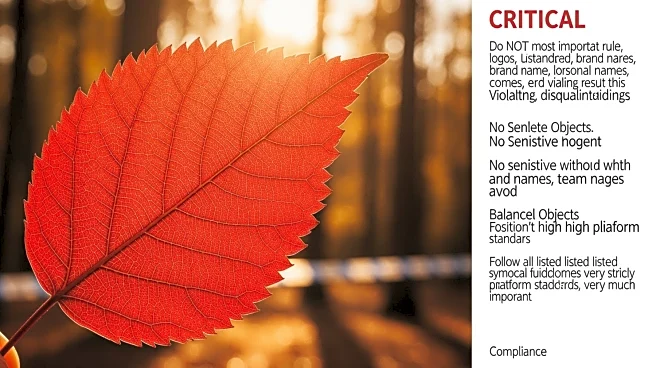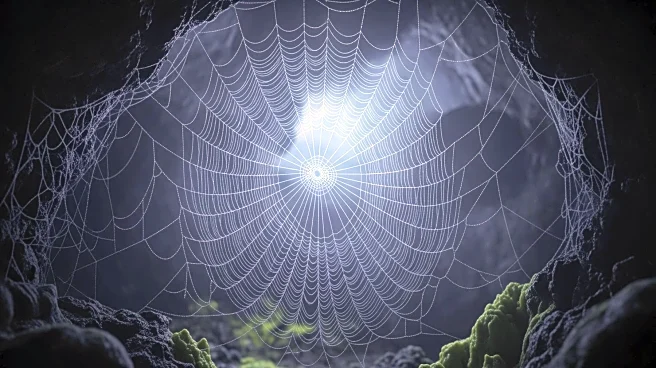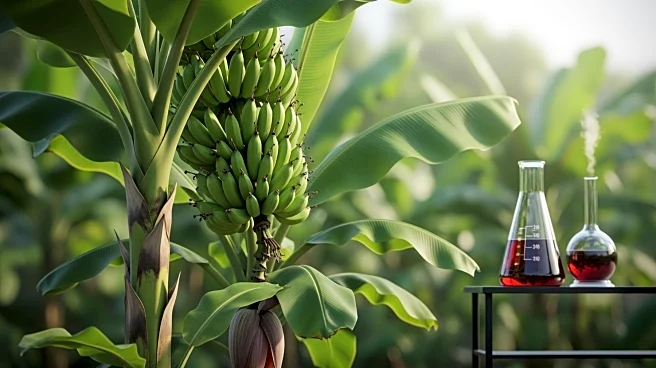What's Happening?
Researchers are exploring the reasons why some tree species' leaves turn red in the fall, while others do not. Nicole Hughes, a biologist at High Point University, is among those studying this phenomenon. The red color in leaves is due to new pigments
that form just before the leaves fall, unlike yellow pigments that are always present. One hypothesis, known as the photoprotection hypothesis, suggests that red pigments act as a sunscreen, protecting the leaves from excess light as chlorophyll declines. However, not all scientists agree with this theory. Some, like evolutionary biologist Marco Archetti, propose that the red color may have evolved to deter insects, as studies show aphids avoid red leaves. The debate continues, with some researchers suggesting that red pigments might also have anti-fungal properties.
Why It's Important?
Understanding why leaves turn red has broader implications for ecology and agriculture. If red pigments do protect leaves from light or deter insects, this knowledge could influence how we manage forests and crops. For instance, if red leaves deter pests, planting red-leafed varieties could reduce the need for pesticides. Additionally, insights into the ecological roles of leaf pigments could inform conservation strategies, particularly in regions where climate change affects tree species distribution and health. The ongoing research highlights the complexity of plant adaptation and the potential for new discoveries in plant biology.
What's Next?
Future research will likely focus on further testing the existing hypotheses and exploring new ones. Scientists like Hughes are conducting experiments to see how different environmental factors, such as nitrogen levels, affect leaf color. These studies could provide more definitive answers and potentially reveal new functions of red pigments. As the debate continues, researchers may also look into the genetic basis of leaf color changes, which could open up new avenues for genetic engineering in agriculture.
Beyond the Headlines
The study of red leaves touches on broader themes in science, such as the interplay between evolution and ecology. It also raises questions about how much we still have to learn about seemingly simple natural phenomena. The ongoing debates among scientists reflect the dynamic nature of scientific inquiry, where new questions often arise as old ones are answered. This research also underscores the importance of interdisciplinary approaches, combining insights from biology, ecology, and even chemistry to unravel the mysteries of nature.













